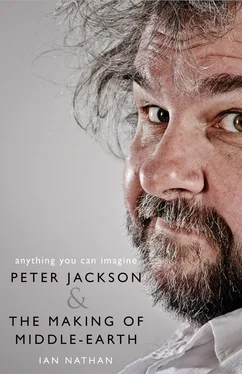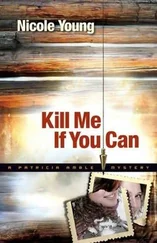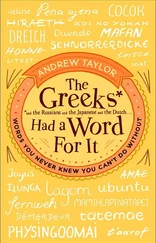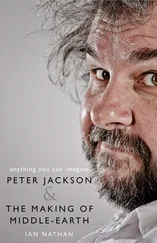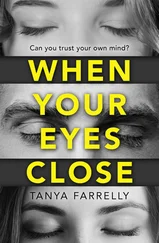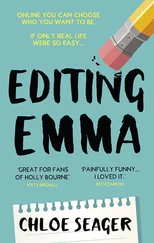Tolkien’s experiences on the Somme pierce the book. It was something to which Jackson, the First World War scholar, really responded. The Dead Marshes, depicting an ancient battleground swallowed up by the earth, are a striking vision of bodies lurking beneath the characters’ feet like no man’s land. The book is transfixed by death. While in counterpoint it portrays loyalty and comradeship in extremis. The Fellowship isn’t only a mission; it is the philosophy that might save them. And in Frodo and Sam the idea of comradeship crosses boundaries of class much as Tolkien had witnessed in the Great War.
The critic Philip French found it telling that Tolkien ‘made the object of Frodo’s journey not a search for power but its abnegation’. Ironically, for all its Elves, Dwarves and hobbits, the book’s humanity makes it timeless — applicable to any age, any war. It remains relevant.
Tolkien’s writing can be archaic (he was creating a mythology; you can take or leave the songs) but he had an intuitive grasp of a set piece modern studios would die for: the Ringwraiths attacking Weathertop; Gandalf confronting the Balrog; the Ents demolishing Isengard; Shelob’s Lair. It was a menu of choice, cinematic dishes.
Jackson appreciated how Tolkien’s writing so vividly describes things: ‘You can imagine a movie: the camera angles and the cutting, you see it playing itself out.’
Ordesky admired how the story expands in a natural way. From the Shire, the world unfolds, getting larger and larger.
And at heart it was a relatively linear story. The unlikeliest of heroes, knee-high to a wizard, must sneak into the enemy’s camp and destroy their most powerful weapon right beneath their nose (or Eye). Keeping the focus on Frodo’s quest, aided and abetted by a disparate group of individuals, would give the films forward momentum. Through a very distorted lens, here was Bob Weinstein’s fucking Guns of Navarone .
So it didn’t take long to conclude that Tom Bombadil was surplus to requirements. Tolkien had started writing his sequel to The Hobbit without a clear sense of direction. The first few chapters charting the hobbits’ flight from The Shire don’t really cohere until they get to Bree and Strider. Preserving Bombadil, an ambiguous eco-bumpkin-cum-forest spirit immune to the Ring, would only waylay the drama and diminish the authenticity of the world at a critically early stage, no matter how many fans clamoured for Robin Williams to supply the babbling brook of his rustic banter.
‘He was never in the script at any point,’ asserts Jackson.
The question of Bombadil, so easily answered, signalled that key debate: how faithful they were going to be. Something they would begin to fathom with a treatment. 2
*
The Treatment: As their initial canary in the cage sent into the Mines of Moria, Botes’ scene-by-scene breakdown provided the basis for a ninety-two-page treatment for the two-film screenplay, clarifying Tolkien’s 1,000-page edifice into 266 sequences. A document that reveals how the backbone of the eventual trilogy was established very quickly, and where there was still considerable uncertainty.
While the detail is inevitably sketchy, the shape and tone of book are clearly intact. This was not the lightheaded remix embarked upon by John Boorman. The first film would end shortly after Helm’s Deep with the death of Saruman (eventually postponed all the way to the extended edition of The Return of the King ), the second picking up immediately in the wake of battle. Many of the scenes are already determined, especially for what were eventually the first and third films. There are fewer major omissions than you might imagine: Lothlórien is the biggest absentee, while Edoras gets only a fleeting visit.
What impresses is how much of Jackson’s vision already emerges so quickly. The opening scene is a ‘breathtaking vista of battle’ with 150,000 Orcs, Men and Elves on screen. He is already inventing signature shots. With Radagast eliminated (until The Hobbit ) the great eagle Gwaihir is sent to rescue Gandalf from Orthanc by the intercession of a moth. An idea which just ‘popped’ into Jackson’s head simultaneously with the image of the camera plummeting over the edge of the tower, down its vertiginous flank and into the quasi-industrial pits of Isengard.
Here is both the train of events and the visual language with which he would depict Middle-earth, giving the camera a panoptic viewpoint, swooping and plunging across the landscape indeed like an eagle. For instance, from the moment he re-read the book the siege of Minas Tirith clanged within his eager imagination: ‘Thousands of FLAMING TORCHES light the snarling, slathering ORCS. DRUMMERS are beating the DRUMS OF WAR …’
*
The Two-film Version (with Miramax): For all his many gifts, Tolkien presented pitfalls for a future screenwriter. The sheer multitudinousness of his sub-creation would always have to be tamed — a landslide of material artfully removed while remaining tangibly Tolkien — but the story is also awkwardly episodic and repetitious. ‘You kind of don’t notice it when you fall into the world of the books,’ groans Boyens. ‘But boy, you notice it when you have to bring it to screen.’
There are dramatic cadences that would have McKee wielding his red pen in fury. As Jackson bewails, the good guys ‘need to lose ’ the Battle of the Pelennor Fields. Tolkien has to rustle up a further clash at the Black Gates to maintain tension. And his female characters are memorable but marginal.
To counter the problem, Arwen is sent in from the sidelines as, Boyens admits, more of a ‘Hollywood stereotype’ at the heart of the action. She arrives to fight at Helm’s Deep and joins the Rohirrim’s charge on the Pelennor Fields. Purists might wince, but this isn’t as entirely unsuccessful as the filmmakers later claimed — on page she hacks at the Orcs with gusto and flashes of ironic humour. Whereas the romance with Aragorn is that bit too broad — the second film opens with Arwen and Aragorn frolicking naked in a pool in the Glittering Caves (which recollects John Boorman’s erotic leanings).
Ordesky, for whom Jackson’s vision was almost sacrosanct, admits to being uncertain of the tone of the scene revealed in the animatic on the pitch video. ‘My life is with you,’ Arwen gushes, having danced over stepping stones to surprise her beloved, ‘or I have no life!’
‘I never had any doubt, but that is the only place where I thought, “Huh, that is probably not what it is ultimately going to be”.’
With no Lothlórien, Galadriel’s moment is threaded into Rivendell as a dream sequence. As Frodo gazes into her mirror (to still see a burning Shire) the scene descends to an almost David Lynchian intensity of dreams within dreams.
Written between 1997 and 1998, the two Miramax scripts entitled ‘ The Fellowship of the Ring ’ and ‘ The War of the Ring ’ (the name Tolkien had preferred for The Return of the King ) would, as Marty Katz once claimed, still have made for exciting if shallower films. Here is the urgency of a Hollywood thriller — and the bluntness of Hollywood logic. Motivation is spelled out explicitly: ‘Those who resist Sauron are doomed …’ announces a scheming Saruman, ‘but for those that aid him there will be rich rewards.’
The biggest challenge Tolkien presented was the absence of a physical villain. ‘If you were doing an original screenplay, having your chief bad guy as a big eyeball would be a no-no,’ laughs Jackson. ‘You also wouldn’t have Saruman never leave his tower.’
His and Walsh’s first answer to the problem was to stir up some monster-movie action: poor Barliman Butterbur is skewered by a Ringwraith, and Sauron’s agents provide a constant airborne terror, attacking Gandalf on the battlements of Helm’s Deep where Gimli cleaves one with a battle axe. Sauron returns from the prologue in his super-sized, humanoid manifestation to duel with Aragorn: ‘… he stands at least 14 FEET TALL … is CLAD in sinister BLACK ARMOUR!’. A concept that would persist long enough to be filmed.
Читать дальше
